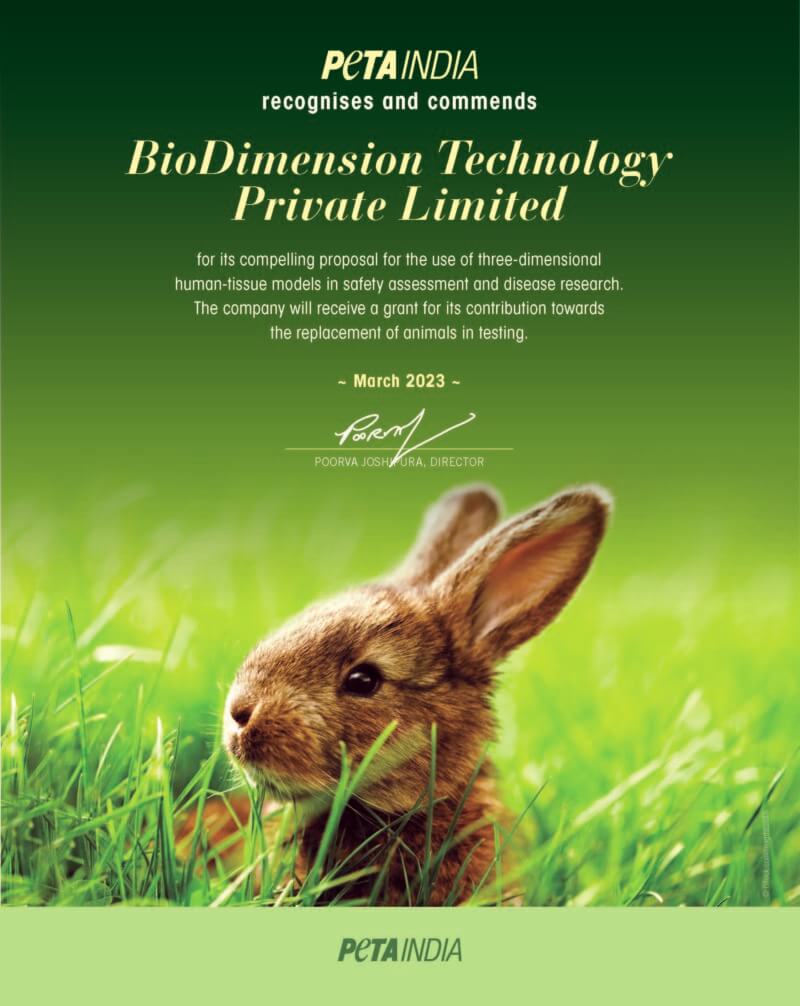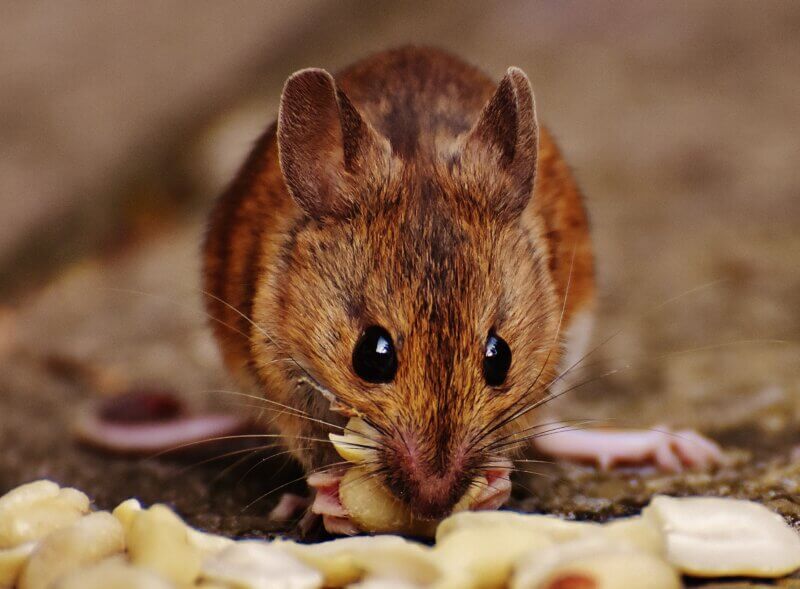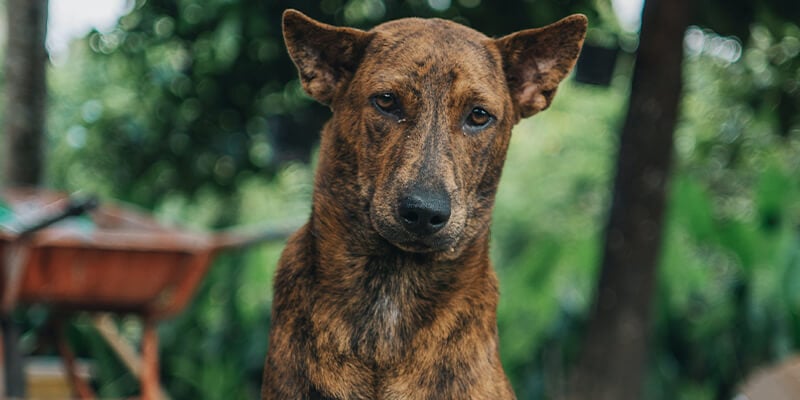BioDimension Wins PETA India Grant for its Game-Changing Research Tools
PETA India is pleased to announce the winner of our Advancing Animal-Free Methods for Toxicology Testing grant, created to propel humane science and spare animals suffering in toxicology tests. The winner is Vellore start-up BioDimension, a tissue engineering company that is developing 4D bioprinted human tissues that can determine the safety and toxicity of cosmetic ingredients and pharmaceuticals better than tests on animals.
This pioneering research team has engineered human skin models made from real human skin cells that can be used in a wide variety of applications and are now in their validation phase. BioDimension is in the process of creating a corneal model for use in eye irritancy tests as well as other tissues designed for disease research. Since the company is located in India, this eliminates all potential issues regarding importing human cell-based tests from other countries and makes animal-free test methods more available and affordable for companies within the country. And of course, continuing to prove the superiority of human-relevant models furthers PETA entities’ global campaign to end to animal testing.
Animal tests are poor predictors of human biological outcomes due to vast physiological differences between species. About 95% of pharmaceutical drugs that are shown to be safe and effective in animal tests fail in human trials because they don’t work or are dangerous. In many disease-specific areas of study, the failure rate of animal experiments is 100%. With modern, cutting-edge technology – such as the sophisticated human cell- and tissue-based tools developed by BioDimension and other international teams – that allows researchers to test the safety and effectiveness of new drugs, vaccines, and chemical compounds, the results obtained are more reliable and relevant than the data obtained by testing on animals.
Join us in calling on the government to embrace PETA India’s proposed Research Modernisation Deal and direct its resources away from what’s not working and towards better methods.







